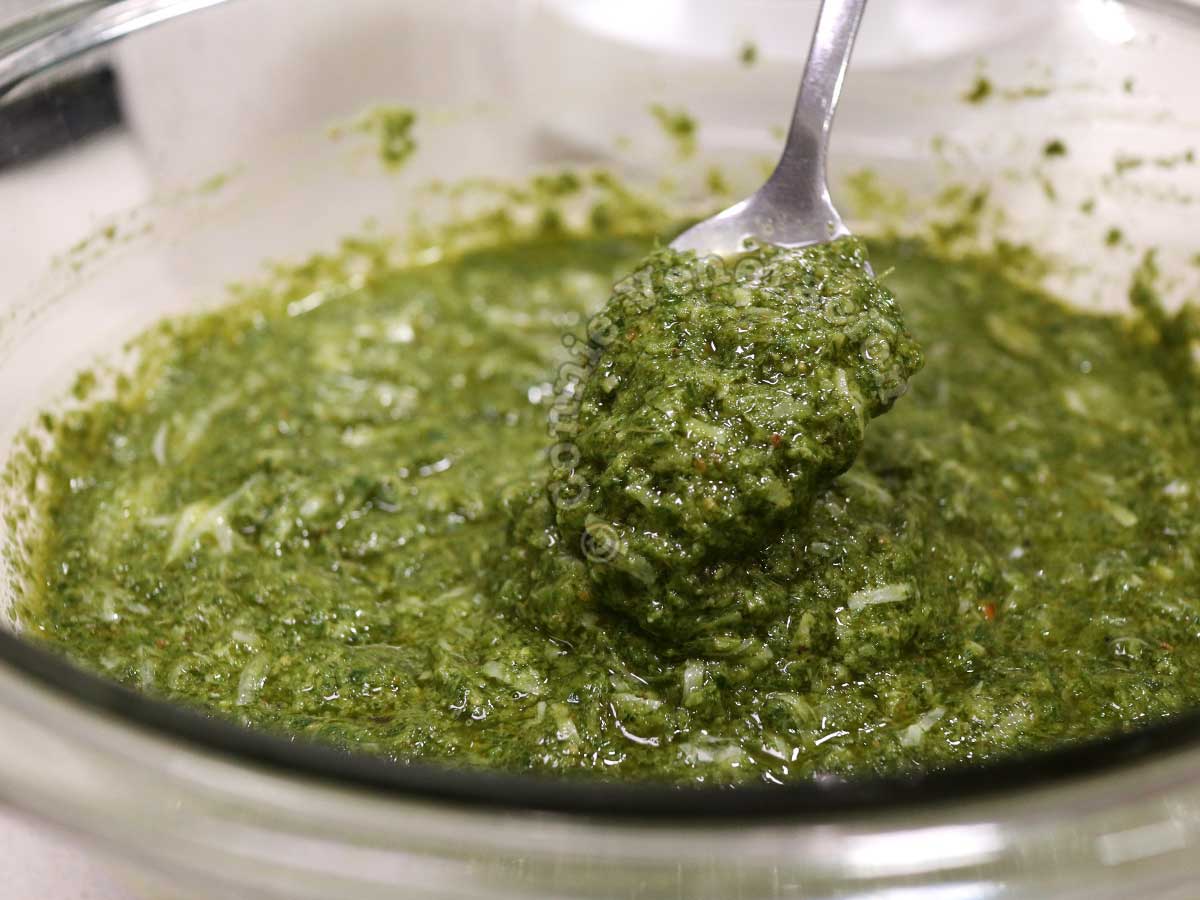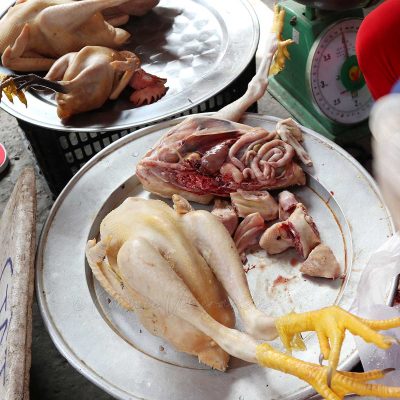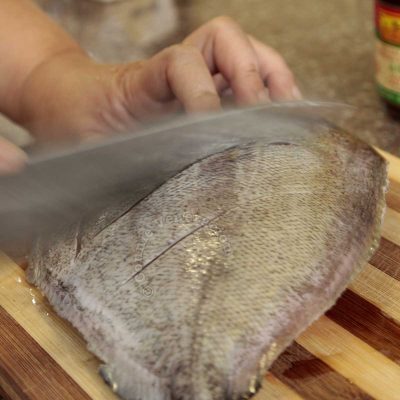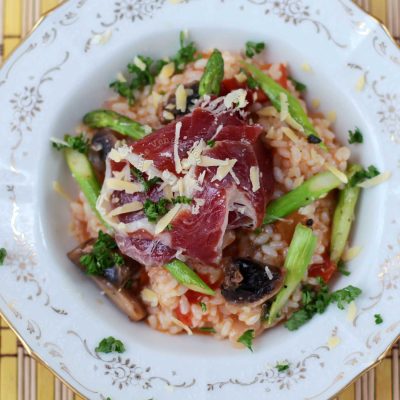What is pesto?
It’s a sauce made by pounding the ingredients traditionally with a mortar and pestle. The most popular — pesto alla genovese with basil, pine nuts, garlic and hard cheese — comes from Genoa, Italy. There are regional variations. Pesto alla siciliana has tomatoes and almonds are used instead of pine nuts. Pesto alla calabrese has roasted bell peppers and black peppercorns, and is spicy. There is a similar sauce in Provence, France, which contains no nuts. And then, there are the adaptations and modern versions which are often still called pesto even when they do not contain the ingredients. In other words, there is no singular recipe for pesto.
How we make pesto at home
At home, when we harvest more basil than we can use in a single dish, we make pesto. In bulk. We keep the sauce in a covered jar in the fridge and scoop out what we need for a dish. Because we’re talking of a huge amount of basil leaves, we use a blender instead of the traditional mortar and pestle.

We stick with seven basic ingredients for making basil pesto:
- sweet basil leaves (stalks discarded)
- nuts
- garlic
- extra-virgin olive oil
- grated Pecorino
- salt
- freshly squeezed lemon juice
We start by rinsing the basil thoroughly before picking the leaves. Yes, even though the basil is from our own garden, we rinse. To remove excess water, the leaves can be passed through a salad spinner.
Then, the rest of the ingredients are prepared.
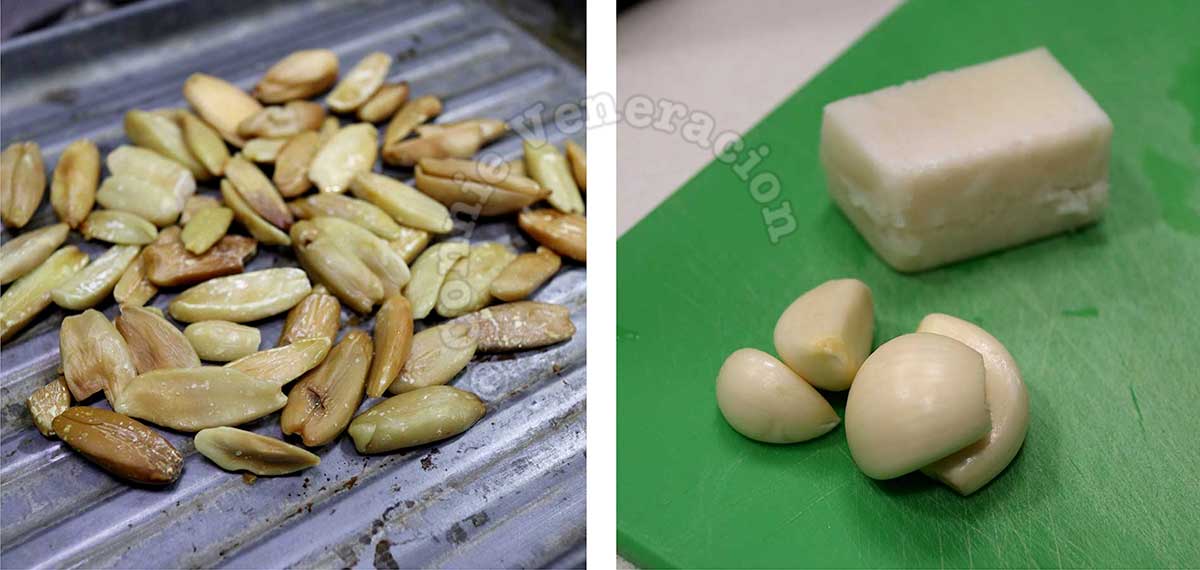
Nuts are toasted until glistening with their own oil and garlic cloves are peeled. Pine nuts are quite pricey in our part of the world so we use pili nuts which have a very high oil content.
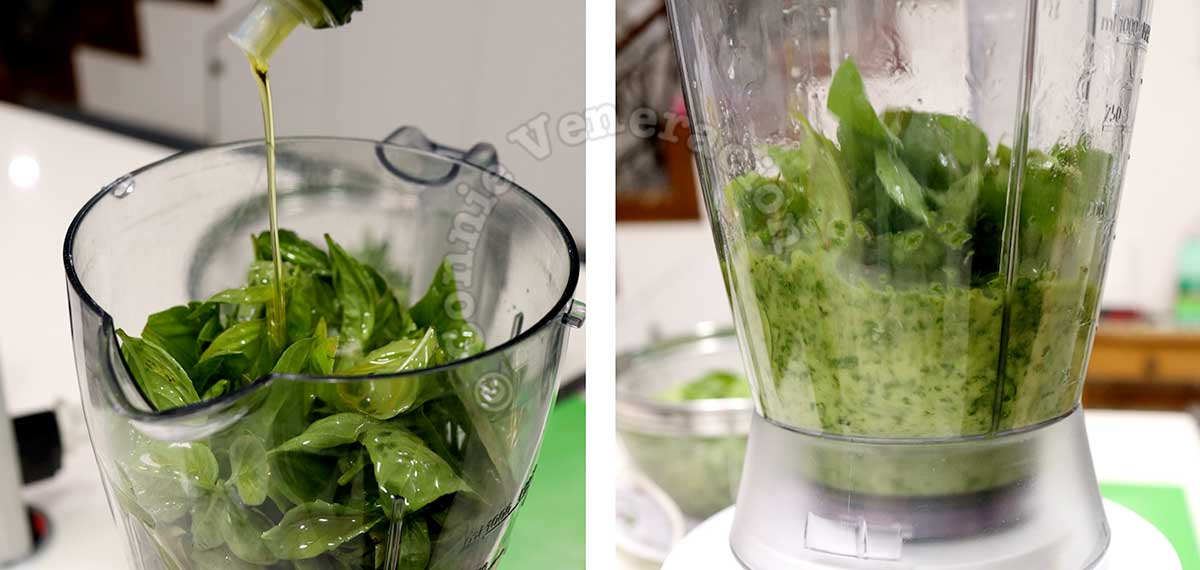
When all the ingredients are ready, we begin making the sauce. Half of the leaves go into the blender with just enough olive oil to get the motor running.
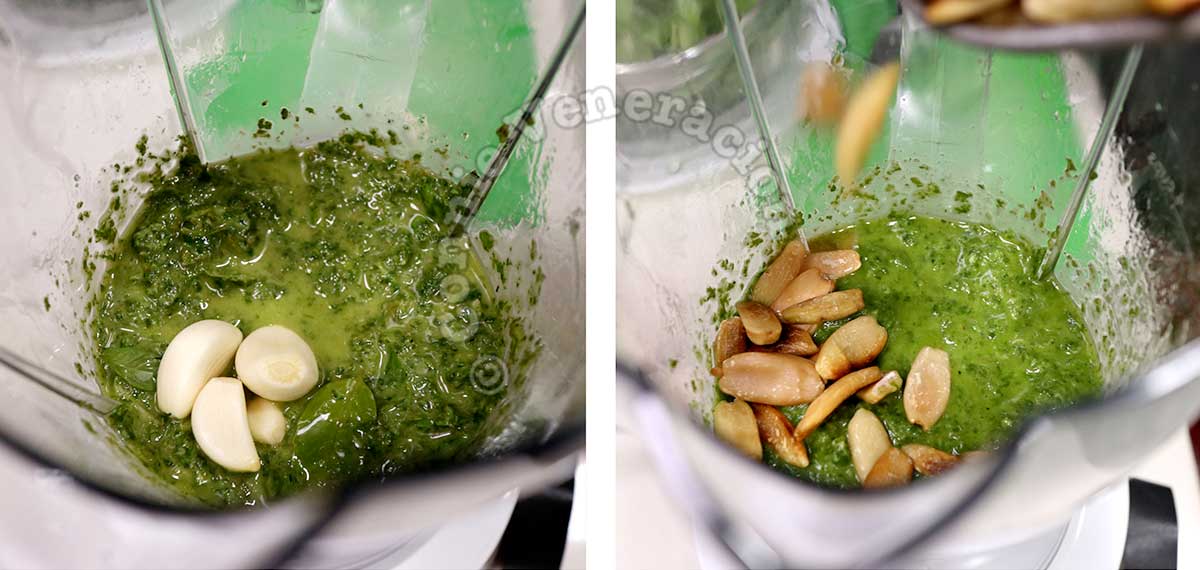
The garlic and nuts are added and everything is processed to crush the solids.
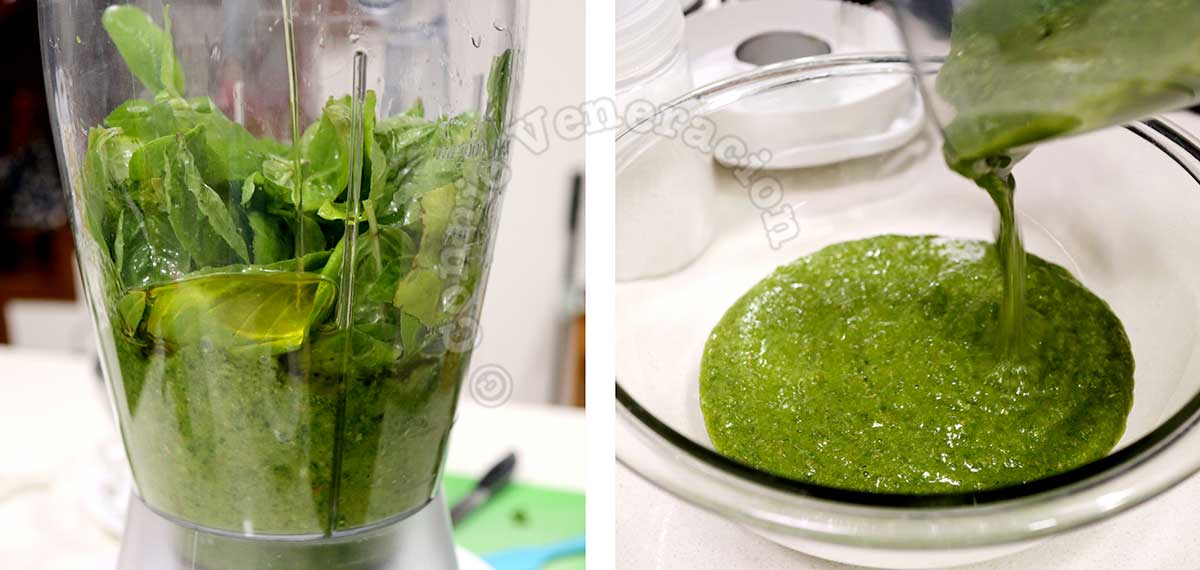
The remaining basil leaves are added with a little more olive oil and the blender is turned on just long enough to break up the basil into small pieces.
Why are the basil leaves processed in stages? For better texture. The first batch of leaves gets processed into smithereens while those in the second batch get processed more coarsley.

The contents of the blender are poured into a bowl, Pecorino is grated directly over the sauce and stirred in.
Then, we season with salt and lemon juice. Why season at the end? Because Pecorino is salty. How much salt the pesto needs depends on how much cheese is already in the sauce. And once the level of saltiness is perfect, we add lemon juice to create a good balance.
How do we use pesto at home?
We use pesto as a base for sandwiches. You know, pesto instead of mayo. We use it as pasta sauce, to garnish fried fish and, lately, we dollop pesto over cooked tomato-based stew.
Why is this homemade pesto sauce not in the usual recipe format?
Because it’s impractical to set exact amounts for the ingredients. If the recipe begins with 200 grams of basil leaves, it might give you the idea that you can’t make pesto if you have less or more than 200 grams of basil.
Four cloves of garlic harvested in the northern hemisphere may be large but they will likely be more bland than small garlic harvested in some parts of Asia.
And it’s even less wise to provide instructions like “process for 30 seconds on HIGH” because blenders are not created equal. Some have more powerful motors than others.
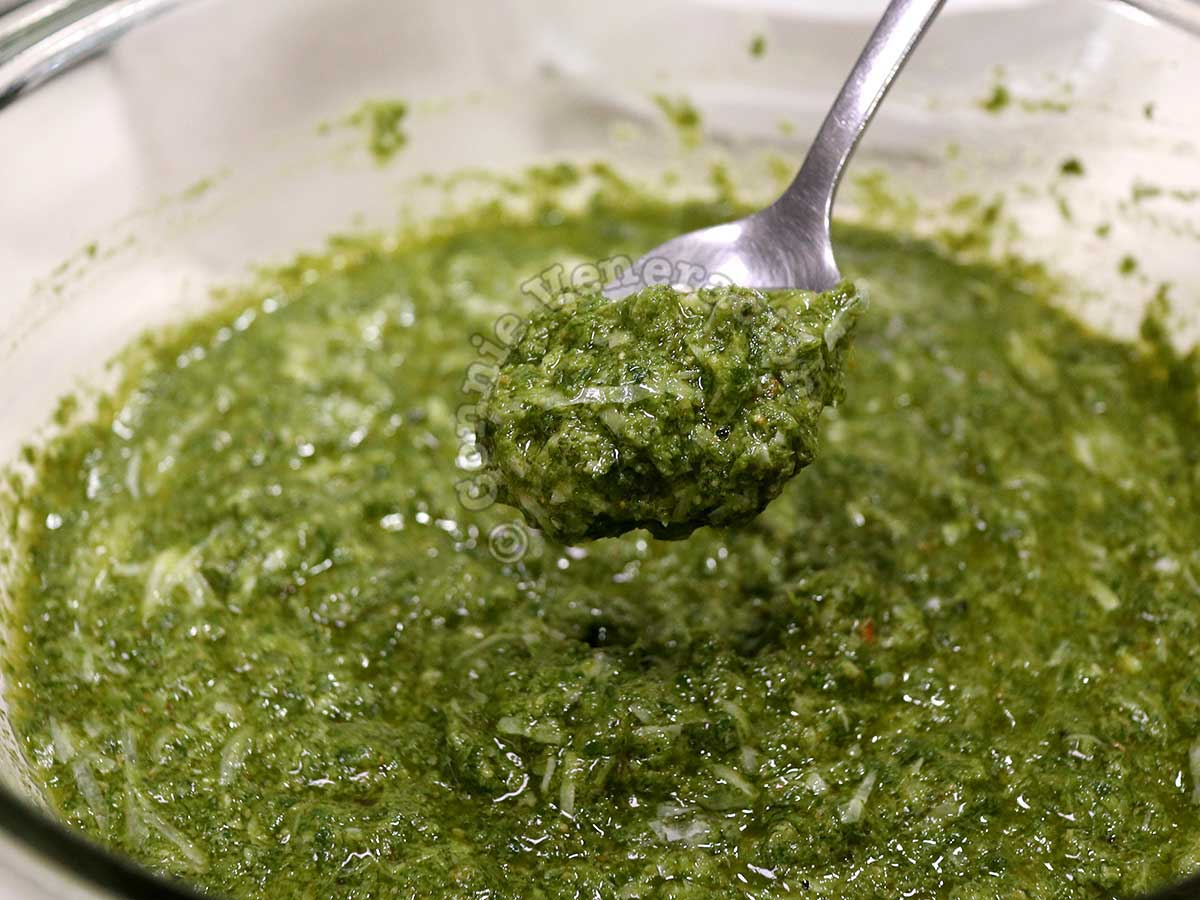
The best way to make pesto is to eyeball everything and to keep adjusting every step of the way. Is the sauce too thick? Add more olive oil. Too thin? Add more basil leaves. And so on, and so forth.

